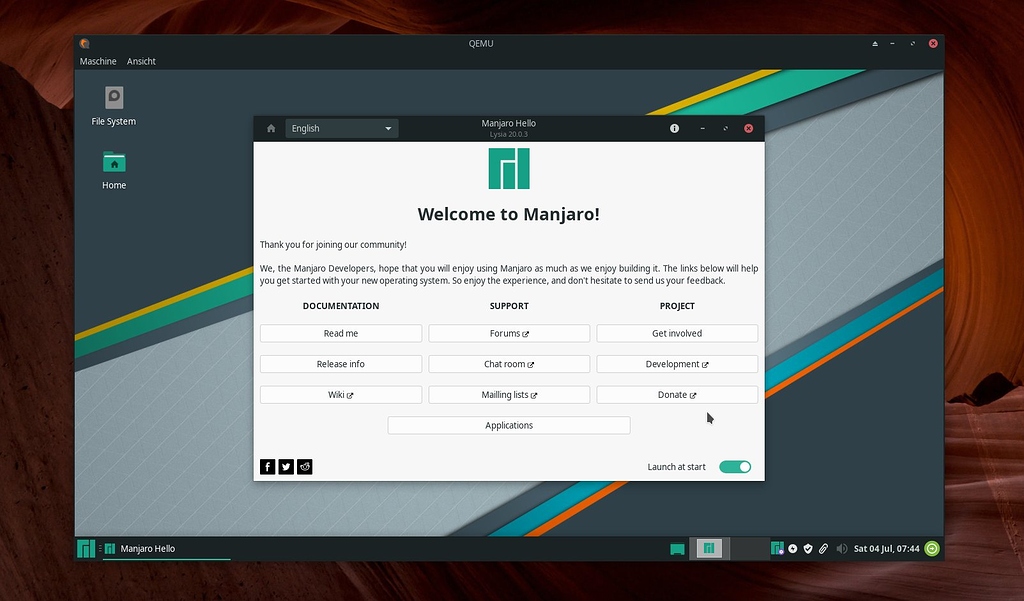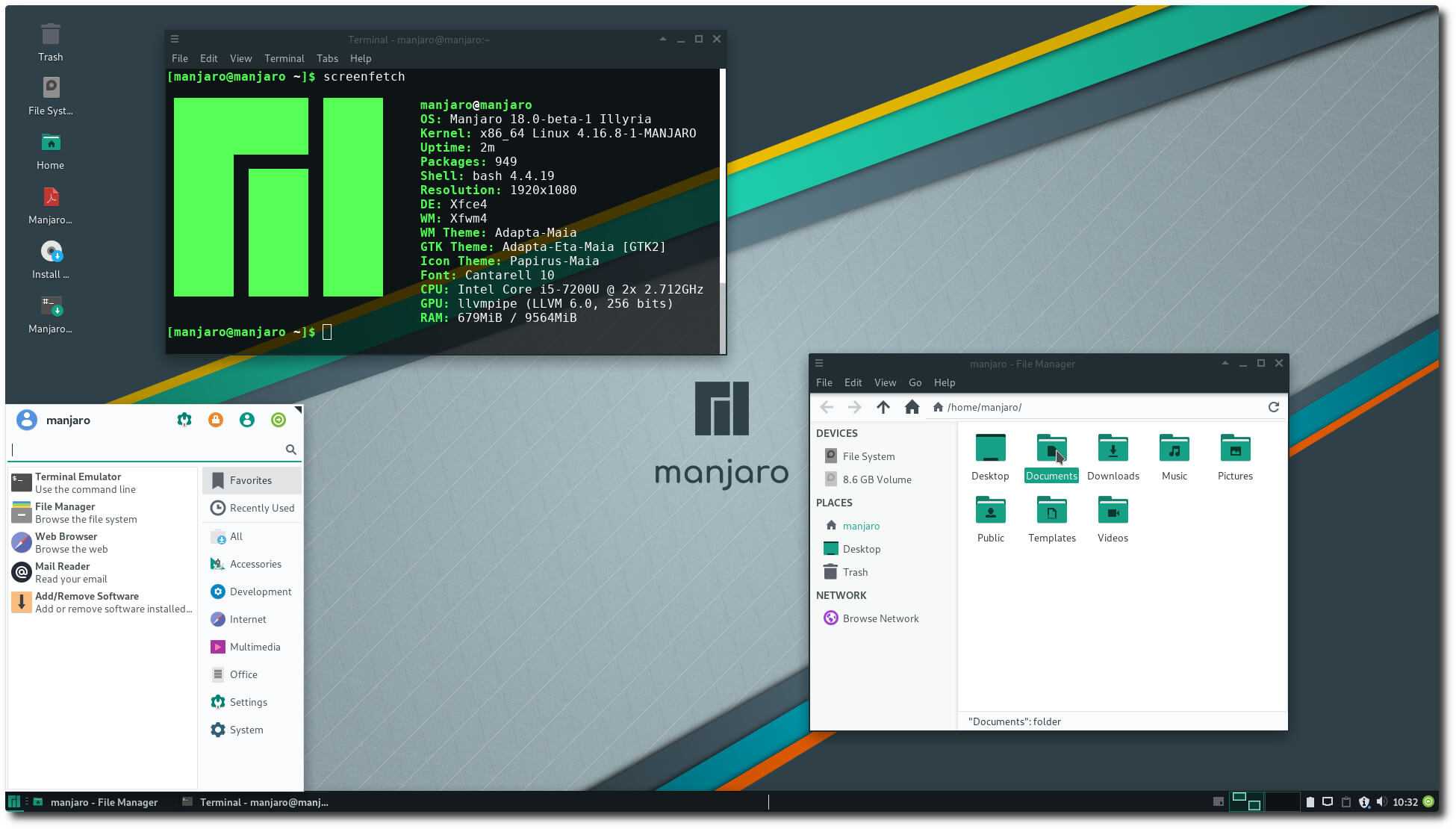

- #Manjaro tigervnc install#
- #Manjaro tigervnc manual#
- #Manjaro tigervnc full#
- #Manjaro tigervnc code#
- #Manjaro tigervnc password#
VNC server can be used as a Systemd's service with the following config file /etc/systemd/system/rvice, enabling the service with systemctl enable rvice will make it auto-start when the system boot (this does not apply to Void Linux or Systemd less Linux's distributions). Tunneling VNC through a VPN connection: this is not covered here. On an SSH session (server's SSH shell) running vncviewer :1 will display the vncviewer window on the client. Run vncviewer on the server and display it's x window on the client over an SSH X forwarded session: On the server edit /etc/ssh/sshd_config and enable/add X11Forwarding yes then restart your sshd service systemctl restart rvice. Then connect to 127.0.0.1:5900 with any VNC client. Tunneling VNC through an SSH session with the local sock proxy provided by an SSH session: On the server edit /etc/ssh/sshd_config and enable/add AllowTcpForwarding yes then restart your sshd service systemctl restart rvice you can then use vncviewer with the option -via or establish the tunnel connection manually, then use any client to connect: Generating an X509 certificate is explained further bellow. Using an X509 certificate: the certificate's location need to be added on the config file, and you need to have the certification on the client as well (setting it's location on the client app). VNC server can be started/stopped with the following commands After starting it you can connect to your server with any VNC client to server-ip:used-port (note that you may probably need to open the used port on the firewall) # Start the serverīasic VNC setup does not use encryption for the exchanged stream, here are 4 commons way of securing a VNC connection:
#Manjaro tigervnc manual#
# See the GnuTLS manual for possible values. # GnuTLS priority string that controls the TLS session’s handshake algorithms. # The maximum number of updates per second sent to each client (default=60) # The number of seconds after which an idle VNC connection will be dropped # Terminate when no client has been connected for s seconds (default=0) # Terminate when a client has been connected for s seconds (default0) # Terminate after s seconds of user inactivity (default=0) # Set maximum number of clients (power of two) # Path to the X509 certificate in PEM format (default=) # Path to the key of the X509 certificate in PEM format (default=) # TLSNone, TLSVnc, TLSPlain, X509None, X509Vnc, X509Plain) (default=TLSVnc,VncAuth) # Security, specify which security scheme to use (None, VncAuth, Plain, # If combined with NeverShared then new connections will be refused while # Disconnect existing clients if an incoming connection is non-shared. # Unix socket to listen for RFB protocol (default=)

# Use protocol version 3.3 for backwards compatibility # Interface, listen on the specified network address (default=all) # Directory containing files to serve via HTTP (default=) # TCP port to listen for HTTP (default=0)

See the following manpages for more: vncserver(1) Xvnc(1).
#Manjaro tigervnc full#
to get the full list of available options we can use Xvnc -help or man Xvnc, here is a config example (also note that on some system like Suse VNC will/may not work if the option geometry is not set): # Supported server options to pass to vncserver upon invocation can be listed Prepare and/or locate the VNC server's config file at: ~/.vnc/config or /etc/vnc/configĪdapt VNC server's settings with the config file.
#Manjaro tigervnc password#
Setup the password (the hashed version will be saved at ~/.vnc/passwd): vncpasswdĮdit the config file (startup script, executed when the server start) ~/.vnc/xstartup as follow: #!/bin/sh
#Manjaro tigervnc install#
Install the TigerVNC X server: # The package name may change depending on the used distroĪpt install tigervnc-standalone-server tigervnc-common Xfce4-whiskermenu-plugin-gtk3 tumbler engrampa Network-manager-applet xfce4-notifyd-gtk3 \ Pacman -S xfce4-gtk3 xfce4-goodies xfce4-terminal \ XFCE or KDE): # OpenSUSE (XFCE)ĭnf -y group install "KDE Plasma Workspaces"ĭnf -enablerepo=epel group -y install "Xfce" "base-x"ĭnf -enablerepo=epel group -y install "KDE Plasma Workspaces"ĭnf -y group install "KDE Plasma Workspaces" "base-x"
#Manjaro tigervnc code#
TigerVNC Server: using native or Java code and actively maintained.On Linux (on a classic machine or a screen less server) there are multiple (opensource) possibility for a VNC server such as TightVNC, TigerVNC and TurboVNC (this is a non exhaustive list, this guide will be using the native version of TigerVNC):


 0 kommentar(er)
0 kommentar(er)
